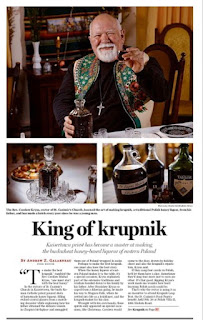Beads: Global Prayer Tools VID 7
Every culture, religion, and almost every
continent has prayer tools;
Jewish and Muslim families, as well as Buddhist, Hindu, Christian Orthodox, and Roman
Catholics all do. To enter into a spiritual realm, humans need
concrete items, which express profound beliefs, deep emotion, drawing quiet
insight, into meditation. For some cultures it’s incense, images, lights,
creation’s flowers,
and symbolic foods.
Beads cross cultures. This realization inspired
me to develpo my personal collection of Catholic and Eastern Orthodox Rosaries
to include other faiths, as personal prayer tools. But, why beads? Using
beads, as a
spiritual tool,
expresses prayer as a union of soul and body.
Prayer which brings together flesh and spirit is more holistic, more
human, than mental
prayer alone. Touching and holding connected beads bonds us to a reality beyond
ourselves, our
minds, our cares, our worries, and our ruminations.
Uniting recited or word
prayer to physical prayer (for
example: beads), we pass beyond thought about God, to encountering God. Praying on beads symbolize a living
connection, a relationship. Holding
beads itself is prayer, so is keeping a chaplet or Rosary in your pocket or
purse. When this circle-chain gets in the way of
change, keys or whatever, they remind us that we’re connected to eternity and of our need
to connect with God. Most world faith
cultures use some form of beads.
The Family Faith International Exhibit
(pictures here from St Casimir’s Social Hall, Buffalo, NY) gathers samples from
a number of countries and religions.
Asia and Africa are represented by Chinese Buddhist and Indian (fragrant sandalwood) meditation
beads, and the 99 divine attribute
beads of Islam (above).
Jewish “forget-me-knots" on prayer shawls appear with
Byzantine Greek “worry beads” represent Orthodox piety. Here, Greeks string
together olive pits, precious metals, and unique plastic basketballs of Greek
sports enthusiasts.
 |
| Russian Orthodox cloth tied “Tiotki,” here with finger and single decade Rosaries. |
Among the more intriguing
Roman Catholic examples are those formed from seeds –called the “Tears of St
Ann,” Native
American semi-precious stones, a Mayan calendar Rosary,
lead
fishing sinker beads, in addition to natural rough or polished, maritime, and forest amber and coral beads (below).
An exceptional artifact is a copy of a
German concentration camp Rosary made by Polish Roman Catholic prisoners. The original three rosaries were made of granite from the
camp’s severe-labor quarry, wood from gallows, and plexiglass from a downed US
fighter plane. The prisoners formed a
living Rosary, carrying a bead apiece, each one filled with their colleagues’
ashes from the camp’s crematoria. These beads were formed into cube shapes and painted to resemble
dice, because possessing a faith object was punishable by immediate death.
Another unique adaptation
is a blessed “prayer shawl.” Crocheting
parishioners attached
beads of 10 plus 1-5 separate fringes of this health-care garment
for my Mom who was breaking and losing all her Rosaries. The welcome covering
comforted her body
and soul.
Chaplets, too, come in
many forms. The most popular being the Divine Mercy Chaplet – a mantra-like way to
pray the beads of the Rosary. The International Exhibit mentioned above,
displays five, knotted, red cord decades with a Jesus medal.
As a child, on purchasing
a miniature, plastic, Baby Jesus shrine at a local department store (!), I was
introduced to the one-decade
tool. On opening the tiny drawer, at the
shrine’s base, I discovered 10 linked, red cut-glass beads finished off with a medal of the
Infant of Prague. Chaplets of the Holy
Spirit, St Jude, St Ann, and
one prayed for an increase of faith are among other types.
The second most popular
Catholic Rosary is the Franciscan meditation chaplet of Our Lady of Sorrows. Each of its seven decades calls to mind different hurtful
events in the life of Jesus and his Mama Mary.
 |
| The word Rosary literally means a bouquet of roses. Each bud of the above Rosaries stands for one of the prayer beads. |
Check Domestic Church Series Video 7 https://youtu.be/OLMuHj8tJ28
Next Saturday: Heaven
Door’s Action Prayer Tool Box: Holy Sprinkle
All video and textual
content of St Casimir’s Series on the Domestic Church and Tandem Blog Articles
© CzMKrysa, Buffalo, NY April-May 2020











Comments
Post a Comment